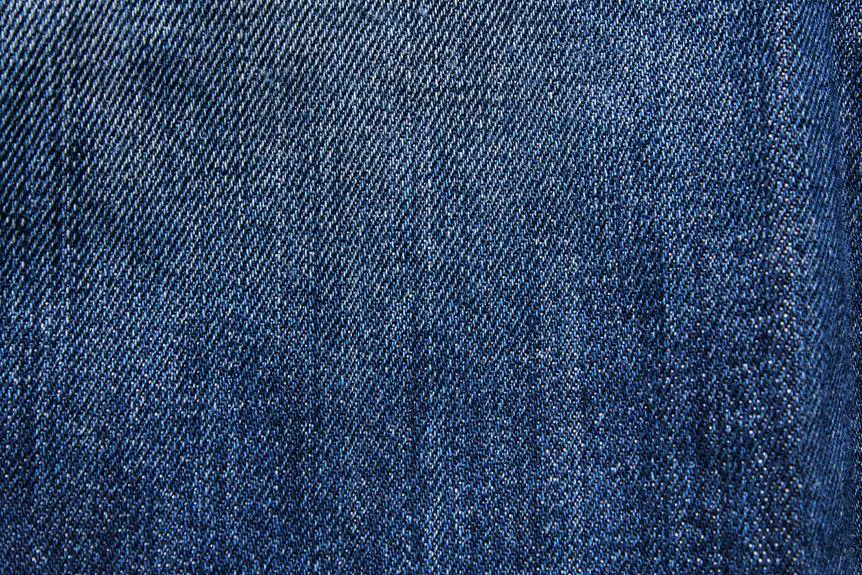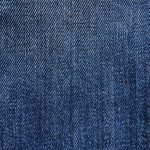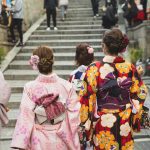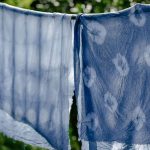When you consider brocade fabric, you might wonder about the intricate processes that bring it to life. It starts with selecting the right raw materials, which play a crucial role in the fabric's final texture and appearance. Then, advanced weaving techniques, particularly with Jacquard looms, create those stunning patterns you often admire. But that's just the beginning; the dyeing and finishing processes add depth and durability. Curious about how each step uniquely contributes to brocade's luxurious feel?
Table of Contents
History of Brocade Fabric
Brocade fabric has a rich history that dates back to ancient civilizations, where artisans skillfully wove intricate patterns into luxurious textiles. You mightn't realize that brocade's roots can be traced to regions like China, Persia, and the Byzantine Empire. In those days, it was a symbol of wealth and status, often reserved for royalty and the elite. The shimmering threads, typically made from silk, caught the light beautifully, making garments and home decor truly breathtaking.
As you explore the timeline, you'll notice that brocade evolved through various cultures. In medieval Europe, it became synonymous with opulence, often used in church vestments and nobility's attire. By the Renaissance, brocade reached new heights, showcasing elaborate designs that reflected the artistic trends of the time. It was during this period that brocade began to spread beyond its original borders, gaining popularity across continents.
Today, brocade continues to capture hearts with its rich textures and stunning aesthetics. You can appreciate its legacy in modern fashion and decor, where it remains a celebrated choice for those who value tradition and beauty in their textiles.
Raw Materials Used
To create the luxurious texture of brocade, artisans typically use high-quality fibers such as silk, cotton, or synthetic materials. Each of these raw materials contributes unique characteristics that enhance the overall quality and appearance of the fabric.
Here's a quick breakdown of the most common fibers used in brocade production:
| Fiber Type | Characteristics | Common Uses |
|---|---|---|
| Silk | Soft, lustrous, durable | Evening wear, upholstery |
| Cotton | Breathable, versatile | Casual wear, drapes |
| Synthetic | Cost-effective, durable | Fashion items, home decor |
Silk offers a rich sheen and smooth feel, making it a favorite for formal applications. Cotton, while less luxurious, provides comfort and breathability, perfect for everyday garments. Synthetic fibers, often blended with natural materials, allow for affordable options without sacrificing durability.
Choosing the right raw material is crucial, as it affects not only the look but also the feel and longevity of the finished brocade. This thoughtful selection lays the foundation for the intricate beauty that brocade is known for.
Weaving Techniques
Mastering intricate weaving techniques is essential for creating the stunning patterns and textures that define brocade. As you delve into the craft of brocade weaving, you'll discover various methods that elevate the fabric's beauty and complexity.
Here are some key techniques you should explore:
- Jacquard Weaving: This method uses a special loom that allows for intricate designs, making it easier to create detailed patterns.
- Double Weave: This technique involves weaving two layers of fabric simultaneously, resulting in a reversible design that adds depth to your work.
- Tapestry Weaving: This method incorporates different colored threads to create images or patterns, providing a unique artistic touch to the fabric.
Dyeing and Finishing Processes
After weaving, the dyeing and finishing processes play a crucial role in enhancing the fabric's color and texture.
You'll start by selecting the right dyes, which can be either natural or synthetic, depending on the desired outcome. Each dye interacts differently with the fibers, so choosing wisely is key to achieving vibrant, lasting colors.
Once you've selected your dyes, the fabric undergoes the dyeing process. This usually involves immersing the fabric in a dye bath, where heat and time influence how well the dye adheres. You'll need to monitor the temperature and duration carefully to ensure an even application.
After dyeing, the finishing processes come into play. These processes help to set the dye and improve the fabric's feel, durability, and appearance. Techniques like steaming or heat-setting can help lock in colors, while treatments for softness or water resistance enhance usability.
Applications of Brocade Fabric
The vibrant colors and luxurious texture of brocade fabric make it a popular choice for a variety of applications, from elegant evening wear to rich upholstery. When you choose brocade, you're opting for a fabric that not only looks stunning but also carries a sense of tradition and craftsmanship.
Here are some common uses of brocade that might inspire you:
- Evening Gowns: Its intricate patterns and sheen make it perfect for formal attire, giving you that show-stopping look.
- Home Decor: Use brocade for curtains, cushions, or upholstery to add a touch of sophistication to your living space.
- Costumes: Whether for theater or cosplay, brocade's unique designs can elevate any costume, making it more visually striking.
With its versatility and aesthetic appeal, brocade fabric can enhance any project you undertake. When you select brocade, you're not just choosing a material; you're embracing a rich history and a timeless elegance that stands out in any context.
Frequently Asked Questions
What Types of Patterns Can Be Created With Brocade Fabric?
You can create intricate floral designs, geometric shapes, or elaborate motifs with brocade fabric. Its rich texture allows for stunning contrasts in colors, making your patterns stand out beautifully in any project you undertake.
How Does Brocade Fabric Vary Across Different Cultures?
Brocade fabric varies significantly across cultures, reflecting unique traditions and aesthetics. You'll notice rich colors and intricate patterns in Asian textiles, while Western designs may emphasize elegance and simplicity, showcasing each culture's heritage and artistic expression.
Can Brocade Fabric Be Machine-Washed or Is It Hand-Wash Only?
You can machine-wash some brocade fabrics on a gentle cycle, but it's safer to hand-wash them to prevent damage. Always check the care label first to ensure you're using the right method for your fabric.
What Are the Best Uses for Leftover Brocade Fabric Scraps?
You can use leftover brocade scraps for small projects like decorative pillows, tote bags, or hair accessories. They're perfect for embellishing items or creating unique patchwork pieces, adding a touch of elegance to your crafts.
How Do You Care for and Maintain Brocade Fabric Items?
To care for brocade, you should spot clean with a damp cloth, avoid harsh detergents, and store items in a cool, dry place. Regularly check for any wear and promptly address any issues to maintain quality.
- Everything You Need to Know About Nonwoven Geotextiles - July 11, 2025
- A Complete Breakdown of SMS (Spunbond-Meltblown-Spunbond) Fabric - July 11, 2025
- The Top 5 Uses for Nonwoven Fabric You Didn’t Know About - July 11, 2025





